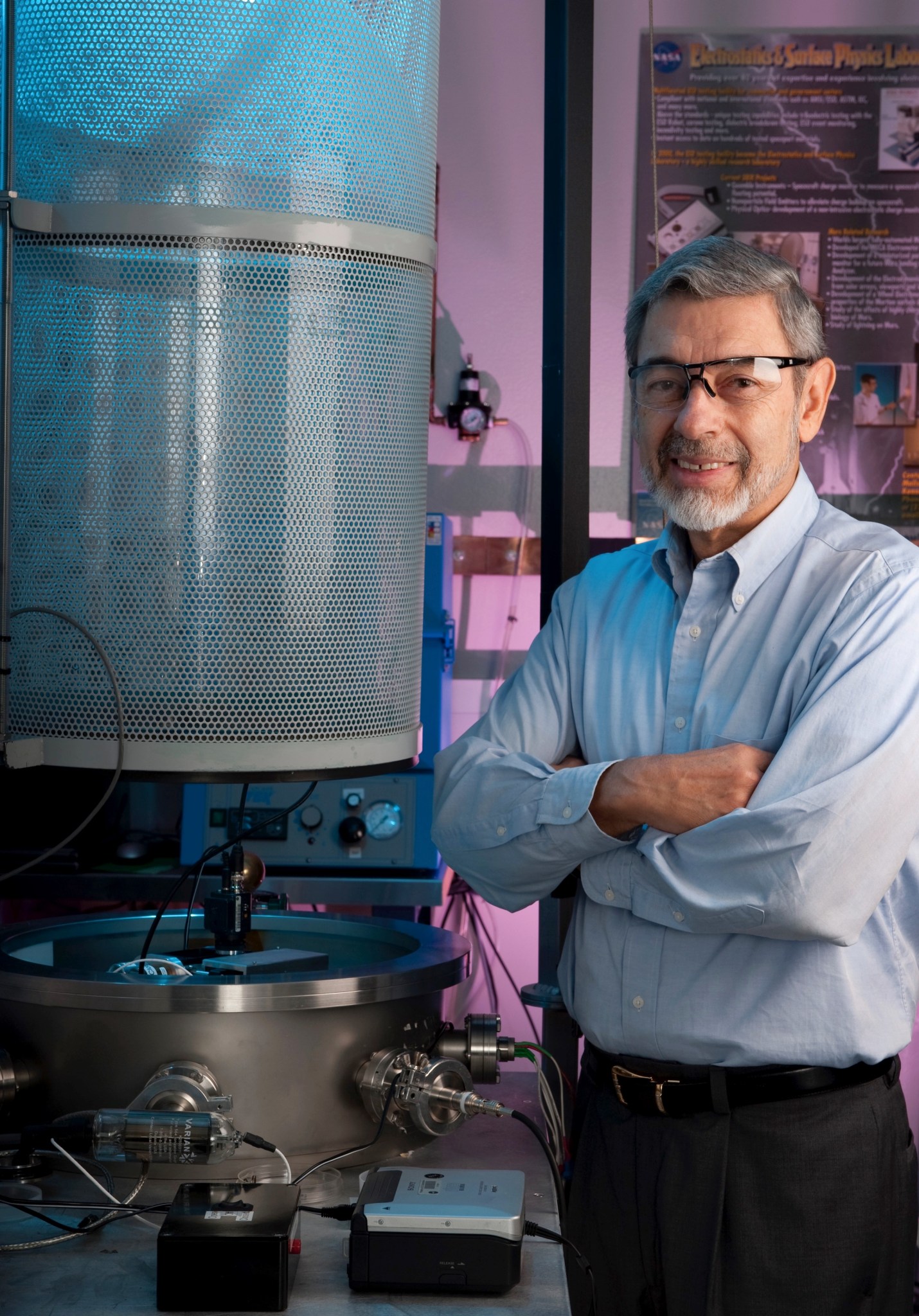
By Jim Cawley
NASA’s Kennedy Space Center

Dust can be a nuisance — on Earth and the Moon. Astronauts exploring the Moon’s South Pole will need a way to help keep pesky lunar dust out of hard to reach places.
A team at NASA’s Kennedy Space Center in Florida may have the solution. The technology launched to the space station April 17, 2019, from Wallops Flight Facility on the eastern shore of Virginia as part of the Materials International Space Station Experiment (MISSE)-11 mission.
“This is the first flight of the Electrodynamic Dust Shield (EDS) and the first exposure to the space environment,” said Kennedy scientist Dr. Carlos Calle. “It is a big deal, and we are very excited. We’ve been working on this for a long time.”
The senior principal investigator for the Electrostatics and Surface Physics Lab, Calle has worked at Kennedy for 20 years, including 15 on the EDS. He currently leads a team of about eight researchers striving to perfect the technology that uses dynamic electric fields to remove dust from surfaces. They have had many successes and performed hundreds of hours of testing in vacuum chambers. But the upcoming year spent on the space station will provide Calle and his team invaluable data that can be used for future missions on the Moon and Mars.
“The idea is to expose the EDS to the low-Earth orbit space environment, which approximates the lunar surface environment during the daytime,” Calle said, “so we can validate the technology and prepare us to fly it on the lunar surface.”
The EDS is activated using transparent electrodes. “You don’t see them — they’re invisible,” Calle said. It can be integrated on astronauts’ visors, camera lenses, solar panels, optical instruments, habitat windows, lander viewports and even spacesuits. The EDS can operate manually — through a switch that would clear the dust in just seconds — or autonomously, which would continuously deflect the dust.
On MISSE-11, EDS samples flew in experiment carriers, which are about the size of a shoebox. They will be installed inside a flight facility platform, attached to the outside of the space station using a robotic arm. There, the EDS can operate in the true vacuum of space, while being exposed to space radiation and solar wind. At Kennedy, Calle and his team will simultaneously operate an exact replica of the setup outside the space station. A data communications unit will transmit information on the health of the EDS, as well as a weekly high-resolution image throughout its time in orbit.
During the Apollo missions, there were several issues with dust. It covered camera lenses, visors and was tracked into the lunar module on spacesuits. Although brushes have been improved, Calle pointed out they can’t be relied upon for longer stays on the Moon.
“Now we know that lunar dust is harmful,” Calle said. “It has sharp edges, for example; it can affect the lungs.”
The idea for EDS originated in 1969 with a NASA researcher who wrote a paper on possible dust mitigation technologies available at that time, as well as potential future technologies. Years later, that concept was reduced to practice by a University of Tokyo professor who developed it for terrestrial applications. He moved on to other work and the idea was abandoned for several years.
Then, at a conference in 2004, Calle met University of Arkansas at Little Rock professor Dr. Malay Mazumder, who had been working on the concept. The two began to collaborate, and a joint proposal was awarded through the university and NASA’s Science Mission Directorate. Together, they named it EDS.
“We revived it,” Calle said. “We took that idea and developed it for space.”
Calle is hopeful EDS will play a major role in NASA’s plans to send humans back to the Moon and on to Mars. Recently, Vice President Mike Pence tasked the agency with getting American astronauts to the Moon in the next five years.
“Dust is just one big problem that needs to be solved to establish a presence on the Moon,” Calle said.
He also remains keenly aware that his contributions could benefit humankind for many years to come.
“That’s what has kept us going for all these years,” he said.
The MISSE flight facility hardware and missions are funded by the International Space Station Program Office (ISSPO) and managed by Alpha Space Test & Research Alliance. NASA materials investigations are selected by NASA’s Space Technology Mission Directorate.




























